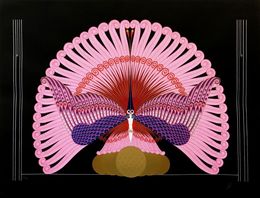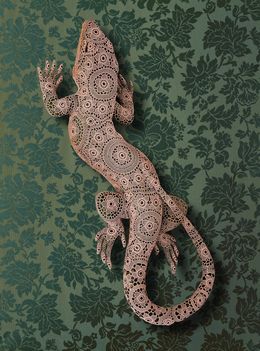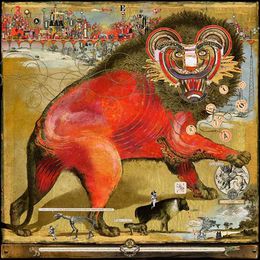
Fantastical Beasts
The bestiary can be considered to exist as a literary genre from the Middles-Ages on. Indeed, we can find examples in manuscripts dating from that period. These writings summarise the characteristics of each creature, and sometimes the fables and morals associated to them. Consequently, these manuscripts represent our collective profound interest for the classification and analysis of the animal world. But the idea of a bestiary, especially of fantastical beasts, has its origins rooted in times as ancient as the day men began to tell stories about the creatures they saw. Ancient Egyptian spiritual culture, for example, is filled with fantastic creatures such as the sphinx; a hybrid species also present in Greek mythology!
Just as the men of the Paleolithic decorated the walls of the Lascaux cave with the silhouettes of the animals they encountered, the interest in illustrating the animal world, real and imagined, has continued to inspire artists to this day. In the Renaissance, interest in curiosities (exotic or otherwise-particular objects and items) was the catalyst for a number of collections, and studies of flora and fauna. And although the animals were not fantastical per se, they were still imagined beasts - fantasized, even! Indeed, it isn't easy to paint a rhinoceros without having ever seen one, basing one's practice solely on the theatrical accounts of the rare travelers back from Africa…
Today, artists around the world draw inspiration from the mythical creatures of the collective imagination. They regularly invent new conceptions of the animal world, conceptions that push the boundaries of the supernatural. It must be said that a bestiary, especially of fantastical beasts, attracts an audience of all ages. For the little ones, it feeds the imagination. For the adults, depending on the work, it can offer an escape from daily life, a trip back to childhood, or even an invitation to reflection or spiritual thought!
In terms of decor, a work of art inspired by fantastical beasts gives a dreamlike dimension to an interior. In a children's bedroom, for example, it will inspire many dreams, and offer young spirits a window view of imagination that they can contemplate and re-interpret over and over again. In a living room, it will bring a unique and extravagant touch to your walls, and will certainly be the starter of many conversations with your guests.
If you're only just discovering the world of fantastical beasts, you may need some advice… Start, then, with the zodiac scenes of Raymond Peynet. For a more traditional feel and a more tribal aesthetic, may we suggest the paintings of Indian artist Ram Singh Urveti? If it's the majesty of mythology that inspires you, talk a walk through Salvador Dalí's sculptures, and if you would rather go for a lighter genre of animal representation, look no further than Emilie Bouguereau's terrestrial paradise-meets-safari watercolors!
Save your search and find it in your favorites
Save your search to find it quickly
Saved search
Your search is accessible from the favorites tab > My favorite searches
Unsaved search
A problem occurred















